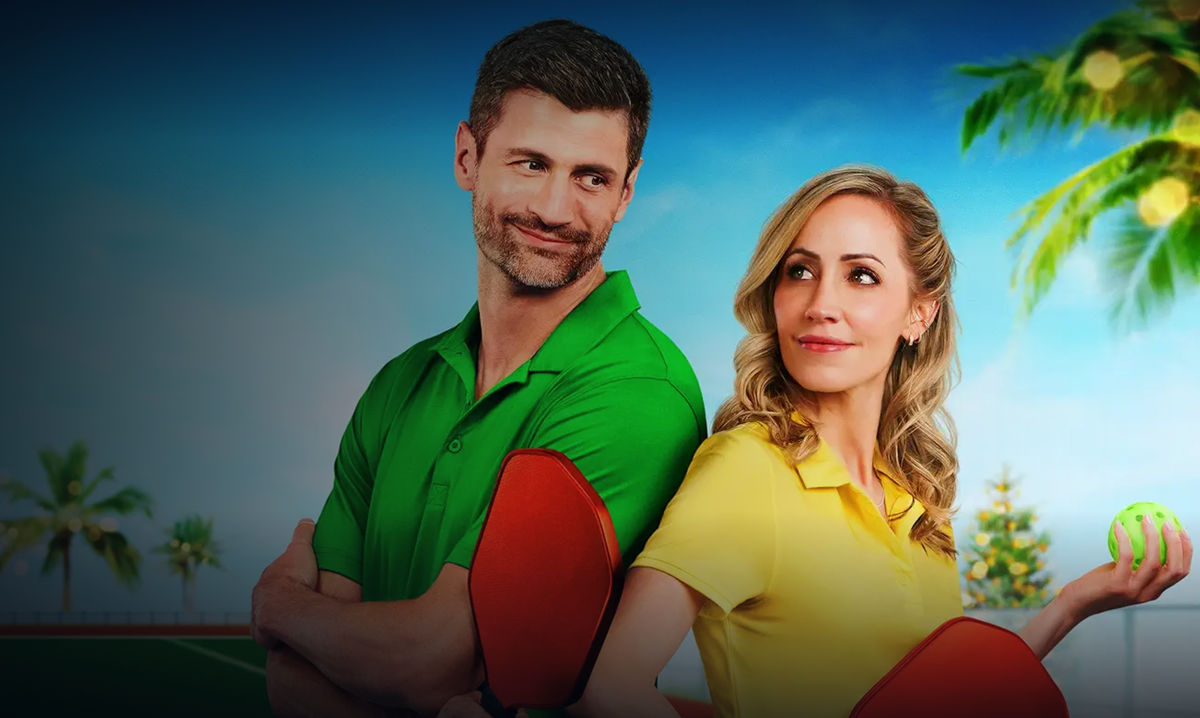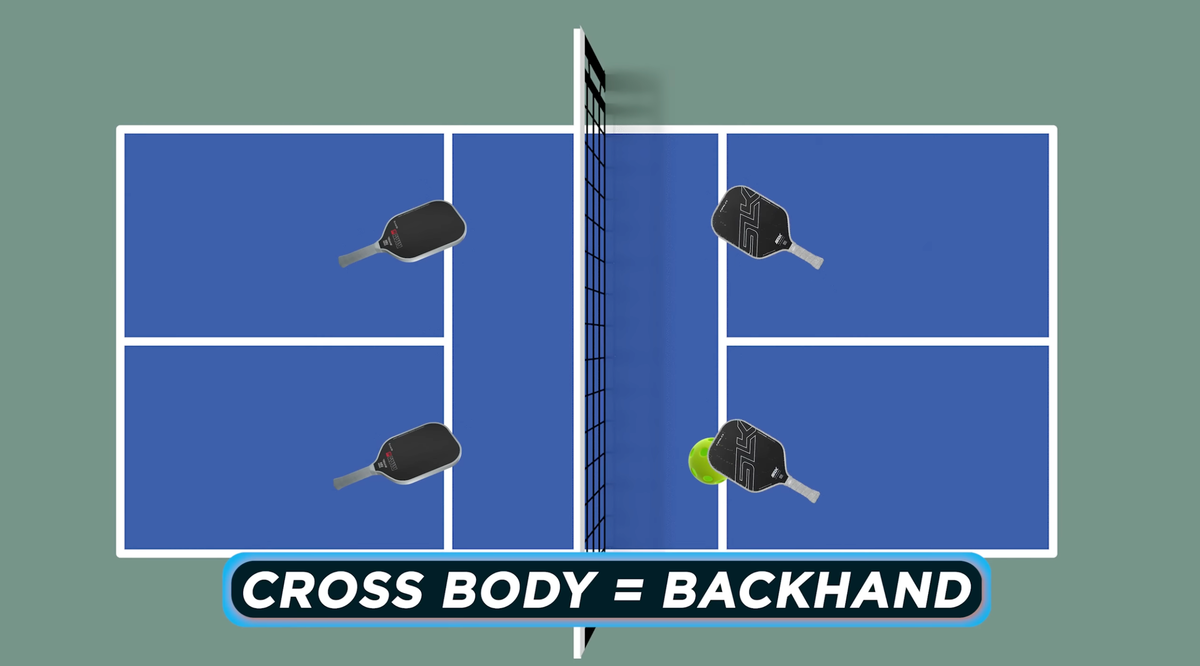Pickleball's an easy sport to pick up but one of the most difficult games to master. From positioning, footwork, and technical skill to mastering the many shots of the game, countless factors make this addictive game incredibly challenging. Among the most difficult pickleball shots, one stands above all the rest. So what is the most difficult shot in pickleball?
The most difficult shot in pickleball is the drop shot, including the 3rd shot drop. It requires a soft and precise touch, with just enough spin to keep the ball low to the net, where it's meant to drop suddenly in an opponent's kitchen. Done successfully, it can create control over a rally or result in a point.
The drop shot is high risk and high reward, and players will be faced with the option of drops in every single game. Whether it's the third shot or simply in a dink rally, this shot is widely available and comes with heavy consequences for success and failure of execution. While many simply use the drop shot as "another shot" or a self-imposed "3rd shot mandatory", others have mastered it as a way to reestablish control of a rally or to close a point in their favor.
While you may not entirely agree with the drop shot winning the title of "most difficult shot in pickleball" we'd love the opportunity to walk you through our logic, and also show you which shots round out or top 4.
Drop Shot Difficulty Explained
A drop shot in pickleball is a shot that's hit softly and lands just over the net, forcing your opponent to move forward quickly. It's meant to be jarring to the receiving side and hopefully catch them off-guard. Doing so will prevent them from getting a strong position to hit it back while also removing time for them to think about their next shot. All they have time to do is react. Which is why it's so powerful. This is also one of the reasons it's so difficult to execute correctly.
What Makes a Drop Shot So Challenging?
The drop shot is one of the most challenging shots in pickleball due to the accuracy and control needed to perform it correctly. In addition to great technique, it requires excellent judgment and court awareness since it changes the pace of a point, this makes it extremely tactical.
The Famous 3rd Shot Drop
The 3rd shot drop is one of the most popular instances of a drop shot. For those new to pickleball, before players can volley, the ball needs to get past the third shot. The sequence goes - serve, return of serve, then 3rd shot. As the serving team, you may be at some disadvantage when it comes to receiving a ball that you can't volley as the returning team makes their way into better positioning.
This is where the 3rd shot drop can be particularly effective at removing those advantages - in fact, a 3rd shot drop should be viewed as a means to better positioning for the serving team, not so much about winning a rally with the shot specifically.
To execute a third shot drop, the player needs to hit the ball softly and with a lot of spin, so it lands in the opponent's kitchen and either skids forward and low, or to an unreachable area. The objective is to make it difficult for the opposing team to return the ball effectively, eliminating their advantage of being able to volley first in a point as well as gain better court positioning.
The 3rd shot drop is challenging in particular because of the preciseness needed at what's usually a long shot. Since the serving team will typically receive the returning team's ball closer to the baseline, being able to accurately place a 3rd shot drop with just the right amount of touch and spin requires mastery. It's the pickleball equivalent of kicking a 63-yard field goal in football - it's doable, but not everyone can do it well or in a live game.
If they don't hit it just right, the ball can easily go out of bounds or pop up, which will make the opposing team's job far easier. It's a shot that takes a lot of practice to master, but when done correctly, it can be a game-changer on the court.
Drop Shots Change Games
Whether you're committing to a 3rd shot drop or simply working to control a rally from the kitchen, a drop shot is difficult but worth the time of practice to master. That's because a well-timed drop shot can completely change a game.
While the purpose of the drop shot is really to establish control of the point if you can hit it correctly, the opposing side is faced with a choice - either get off balance to reach the ball or leave it be and let it go out. How is this different than any other shot?
The Ball Won't Come to Them
In many cases, a shot that goes to the other side will end up within reach of the other team, but a solid drop shot is meant to land in the kitchen and either die on the court or bounce out. The other team doesn't have the luxury of letting it bounce toward them in this instance.
Too Much Force As They Get to the Ball
For those who realize they can't sit back and wait for the ball to arrive, they are powering forward with strange balance and a prayer to make it in time. Assuming your drop stays low, the odds of them getting a difficult shot back to you are extremely low. You can thank physics for that, more specifically, the law of force. Mass and acceleration are the drivers of force, and a player propelling at full speed trying to get a ball back from a low point will pop the ball up or send it clear over to the next court.
This isn't every occasion certainly, but a perfect drop shot will command this type of response. The best answer for the recipient is just to keep it in play. Now then, if the drop is the most difficult shot in pickleball, which shot is the second most difficult?
What's the Second Most Difficult Shot in Pickleball?
The reset shot is the second most difficult shot in pickleball because it requires changing the pace of a game and the ball's direction while under pressure. Since resetting is typically done from a defensive positioning, it's counterintuitive to the natural tendency of keeping the ball in play or driving it back.
The Difficult of Resetting
Playing defensively is already difficult, but if things start to get unwieldy against an aggressive opponent, resetting the point may be your only option. The goal of neutralizing a rally and putting the ball back in play never looks the same from one point to the next - there are too many variables that go into it, such as the speed or spin of an incoming shot.
But there are a few common attributes among successful reset shots:
Technical Skills
Changing the pace of a game is no small feat. Since it's from a defensive footing, this most often means slowing the game down. Players that fail to do this correctly will make the mistake of hitting the ball too softly to slow the tempo down, which will either send it right into the net or pop it up for the other side to finish them off.
And if you're trying to send the ball cross-court after it's been on a consistent forehand to forehand rally, you'll find this just as challenging as changing the pace. Establishing a new direction for the ball after repeatedly going an expected way for consecutive shots often leads to getting the angle wrong, and sending the ball beyond the sidelines.
So executing reset shots that can change the direction of a pickleball or the pace of the point requires immense skill. You need top-notch footwork, balance, hand-eye coordination, paddle control, and a comprehensive understanding of the mechanics involved in pickleball.
High Acuity for Reading Opponent
When you're up against an aggressive opponent or team that constantly has you playing against the ropes, one of the most important skills you can develop is anticipating their shots. In fact, it's one of 9 tips to help players defend better in pickleball.
For players attempting to use the reset shot as a way to neutralize control of a point, anticipation is crucial because it directly impacts how you position for the reset shot. Reading your opponent's shot is the key to being in the right position for how you anticipate the trajectory of the ball coming your way, so you can adjust the paddle angle and speed correctly. As you can see, there's a ripple effect to knowing what your opponent will do next.
Get it right and your chances of resetting successfully skyrocket - get it wrong and you'll most likely kill the point.
Patience and Calm
Playing a match on the defense is exhausting, leading many players to try and rush the reset. This is a huge mistake and a quick way to remain on the defensive against an aggressive opponent. Reset shots require monk-like patience to wait for the right opportunity. In many ways, it's like going in for the kill in a dink rally - not every shot is appropriate to attack with. Similarly, not all defensive shots are right for resetting.
Since this all takes place under high-pressure scenarios, it's easy to self-combust and make errors. Picking your moments carefully will help you avoid making errors and increase the odds of a successful reset shot.
Other Challenging Shots in Pickleball
There are so many challenging shots to pick from that it was difficult compiling a top two. Any shot from our 7 pickleball shots that take players from 3.5 to 4.0 could have made the cut here. While the drop shot and reset are based on personal experience, if they aren't your top two, they should certainly fall in your top three or four shots in pickleball.
Candidly, the drop shot and 3rd shot drop as the most difficult shot in pickleball was never up for debate on our end. But the reset shot did garner a lot of internal discussion. The two following shots were almost considered for the title of "Second Most Difficult Shot in Pickleball."
Volley Lobs - Honorable Mention
There are several ways to lob and it's easily a shot that's over-relied on and seldom executed successfully, but among the many forms of pickleball lobs, the volley lob stands out as the most challenging type. If you aren't familiar with a volleyed lob, it's a lob that you hit before it bounces on your side. It has the most effect when you do it standing just outside your kitchen, and even more so when you do it after a lengthy dink exchange.
If a standard lob in pickleball is running a 5k race, then a volleyed lob is winning an ultramarathon. It's not easy, but worth it if you can successfully pull it off.
Erne - Honorable Mention
Who doesn't love seeing an erne pulled off to perfection? Aside from having the most memorable shot name in pickleball history, an erne is a shot that can bring an entire court to its feet. An erne is a shot that takes place close to the net, typically over the top of the non-volley zone, that allows you to legally volley.
They seemingly break the rules by volleying over the kitchen, which is a spectacle to witness, yet risky as you'd imagine. There are three ways you can go about an erne, but all open you up to the pitfalls of illegally volleying in the kitchen or leaving a massive gap for your opponent to take advantage of.
In many ways, an erne is a rare thing of beauty, lacking the utility to truly be the first or second most difficult shot in pickleball.
The Hardest Shot Is Self-Discipline
Of course, the most difficult and second most difficult shots were simply created out of the experience - no poll was conducted for this. So others may have definitions of what the most difficult shots are in pickleball. There are a ton of shots that are challenging, and ultimately each person's list comes down to personal opinion.
However, one thing every pickleball player may agree on is the shots we don't take are the most difficult. We certainly couldn't create a list of the most difficult shots in pickleball and lead with a non-shot, but the point remains. Self-discipline to not respond to everything within reach would be a shot worth mastering. After all, how many times have you sent a ball back that was going beyond the baseline? It happens to every player.
If you can practice shot-discipline, drop shots, and resets, you'll be a force on the court.
Anuncie Aqui / Advertise Here
Sua marca para o mundo Pickleball! / Your brand for the Pickleball world!

 English
English  Spanish
Spanish  Portuguese
Portuguese  German
German  Italian
Italian  Japanese
Japanese  French
French  Polish
Polish  Russian
Russian  Netherlands
Netherlands  Hungarian
Hungarian  Turkish
Turkish  Videos
Videos 







 English (US) ·
English (US) ·  Portuguese (BR) ·
Portuguese (BR) ·